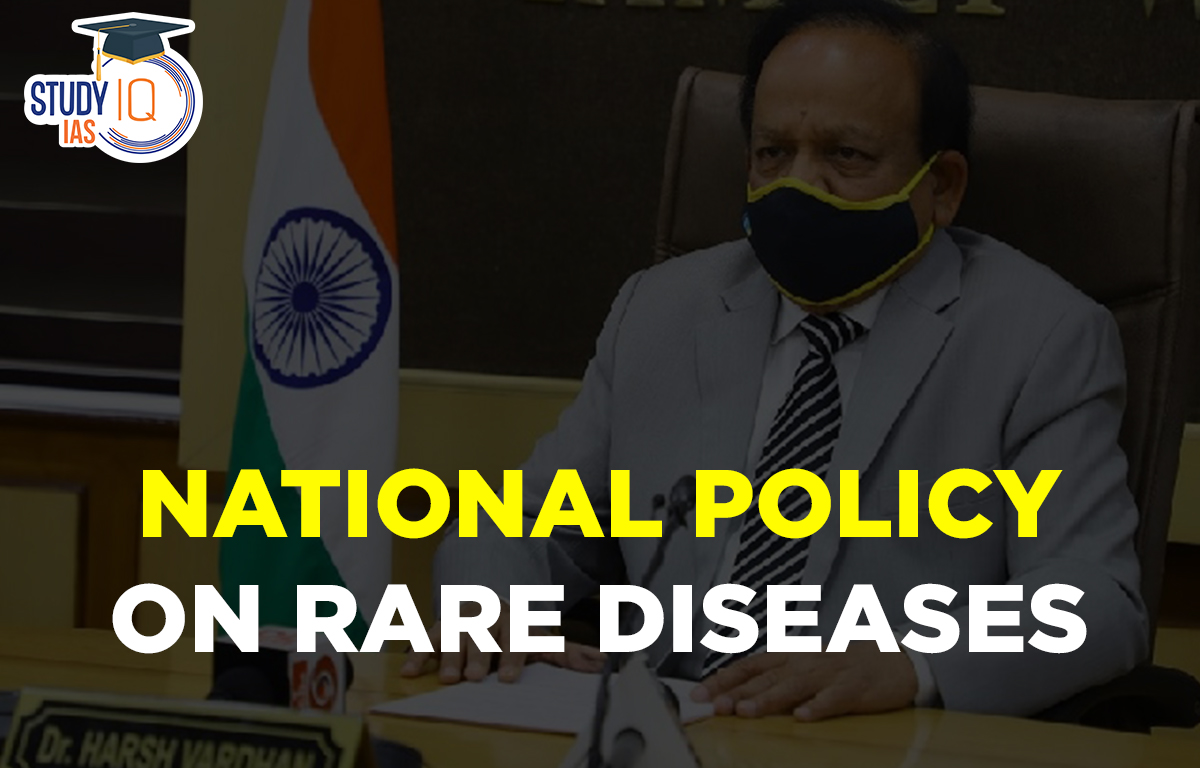Table of Contents
National Policy for Rare Diseases Latest News
The MP alleged that the “unending delay and lack of urgency” on the part of the Centres of Excellence (CoE), designated as per the policy, has claimed several young lives and endangered the survival prospects of 415 patients, largely children, diagnosed with rare diseases.
She also pointed out that many CoEs were yet to seek financial support as per the policy for treating the patients.
National Policy for Rare Diseases 2021
About: It was launched by the Ministry of Health and Family Welfare in March, 2021 for the treatment of rare disease patients.
Salient features of National Policy for Rare Diseases 2021:
| Objectives |
|
| Categorization | The rare diseases have been identified and categorized into 3 groups:
|
| Centers of Excellence (CoEs) |
|
| Nidan Kendras |
|
| Financial Support |
|
| Voluntary Crowd-Funding for Treatment | Using digital platform for voluntary individual and corporate donors to contribute to the treatment cost of patients of rare diseases. |
| National Registry | A national hospital-based registry of rare diseases will be created to ensure adequate data and comprehensive definitions of such diseases are available for those interested in research and development. |
About Rare Diseases
Definition: WHO defines rare disease as often debilitating lifelong disease or disorder with a prevalence of 1 or less, per 1000 population. However, different countries have their own definitions to suit their specific requirements.
Examples: Lysosomal Storage Disorders (LSD), Pompe disease, cystic fibrosis, muscular dystrophy, spina bifida, haemophilia etc.
Challenges with Rare Diseases:
- Diagnosis: Early diagnosis of rare diseases is a challenge owing to multiple factors that include lack of awareness among primary care physicians, lack of adequate screening and diagnostic facilities.
- Unavailability of treatment: There are between 7000 – 8000 rare diseases, but less than 5% have therapies available to treat them.
- Prohibitive cost of treatment: As the number of persons suffering from rare diseases is small, they do not constitute a significant market for drug manufacturers. For this reason, rare diseases are also called ‘orphan diseases’.


 UPPSC Previous Year Question Papers, Dow...
UPPSC Previous Year Question Papers, Dow...
 Most Commonly Used Cancer Drugs and Thei...
Most Commonly Used Cancer Drugs and Thei...
 Tansen Biography, Musical Legacy and Mas...
Tansen Biography, Musical Legacy and Mas...





















